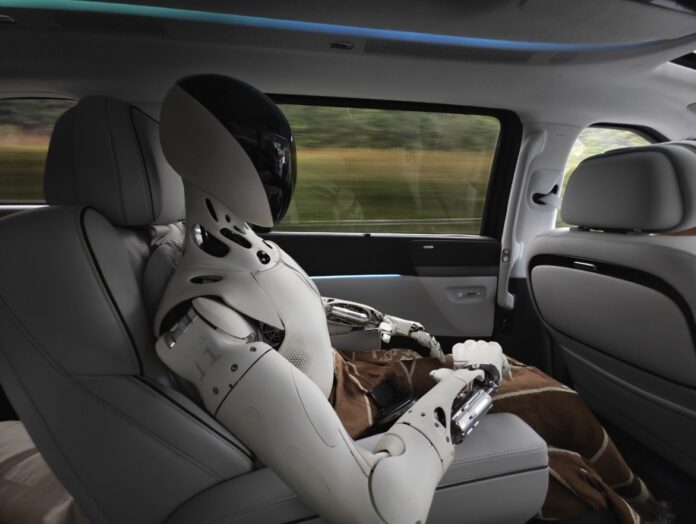Chinese electric vehicle company XPENG recently announced Q1 2025 results, alongside exciting plans for new vehicle launches and a bold push into robotics.
XPENG has recently entered the Australian market, with its G6 SUV available now and two other vehicles on the way. The G9 SUV will soon be released 7-seater X9 People Mover.
XPENG’s humanoid IRON robot made its debut in April at the Auto Shanghai Show, impressing attendees with advanced capabilities such as voice interaction, walking and fine motor control.
Chairman He Xiaopeng stated that the current IRON prototype is merely a previous-generation prototype. Next, the XPENG Turing AI chips, which are set to be mass produced in AI vehicles, will be deployed in IRON robots — significantly enhancing their on-device computer power.
We’re seeing a trend where Tesla, Xpeng, and a number other new automakers are extending their AI expertise to new form factors. This includes the massive opportunity of humanoid robotics.
XPENG will use its VLA architecture to power the large model that powers the IRON robot. This architecture is in line with the world-class foundation model of the Company.
XPENG will also use its cloud-based AI infrastructure for training. Together, these innovations will be expected to significantly increase the intelligence ceiling for XPENG’s humanoid robotics. In the humanoid robotics domain, XPENG aims to launch a mass-production-ready humanoid robot by 2026, achieving industry-leading levels of intelligence and leveraging production-scale data to drive its rapid evolution.
This will be a landmark in democratizing AI within the automotive industry. It will disrupt the norm that urban intelligent driving features can only be found in top-end, high-end models – and showcase China’s innovation in physical-world AI to the world.”
– He Xiaopeng. Chairman and CEO of XPENG.
Announcing a robotic system and even showing a working prototype is a great start, but as the industry moves quickly, Xpeng must move quickly to keep up. If you can create a brain that is easy to train, capable hardware and a package that is affordable, the opportunity for Xpeng will be huge.
For the business application, economics is critical, including factors like charging time. Manufacturers must first decide where to focus their efforts and realize that this is a race for mass adoption.
Since humanoid robotics haven’t yet walked among us, there’s a good chance that a brand could be established.. And people will think of brand X when they get to the market early and are able to scale production and lower costs.
XPENG reported quarterly revenue of RMB 15.81 billion, representing a 141.5% year-over-year increase. Total vehicle deliveries reached 94,008 units, setting a new quarterly record and marking a 330.8% year-over-year growth.
Gross margin reached 15.6%, up 2.7 percentage points year-over-year, hitting an all-time quarterly high. Vehicle gross margin rose to 10.5%, an improvement of 5 percentage points year-over-year, marking the seventh consecutive quarter of growth. Net loss narrowed further to RMB 660 million.
As of the end of Q1, XPENG held RMB 45.28 billion (US$6.24 billion) in cash, cash equivalents, restricted cash, and short-term investments — representing a quarter-over-quarter increase of over RMB 3.33 billion.
For the second quarter of 2025, XPENG expects total deliveries to reach between 102,000 and 108,000 units, representing a year-over-year increase of 237.7% to 257.5%. Total revenue is expected to range from RMB 17.5 billion to RMB 18.7 billion, reflecting a year-over-year growth of 115.7% to 130.5%.
The financial results show that XPENG significantly narrowed its net loss quarter-over-quarter in Q1, while generating over RMB 3 billion in positive free cash flow — a clear sign of the company’s improving self-sufficiency and internal cash generation capability.
For more information, head to
https://www.heyxpeng.com/





